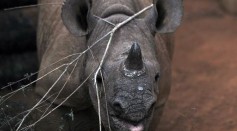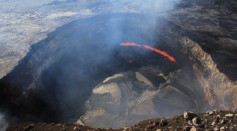nature

Thanks To 'Ageing', Scientists Can Now Predict Earthquake More Accurately

Emerald Ash Borers Invades New Jersey
Thousands of Endangered Antelope Deaths Have Scientists Investigating a Serious Concern
Were Dinosaurs Warm Blooded Like Modern Animals?
Scientists Use 3D Printed Eggs to Study the Art of Deception among Birds
Parasitic 'Dementor' Wasp Leaves Prey Without Free Will
Ancient DNA Shows Dogs Split from Wolves Much Earlier than Previous Estimates
Seeing With Its Skin—How An Octopus Can Live In the Deep

Hunter Pays $350,000 for the Opportunity to Kill Endangered Black Rhino, And He's A Conservationist
The Forecast Calls for Chance of Spiders in Australia
A Special Mother’s Day Gift: A Baby Beluga

Finding the Origins of Chinook Salmons Through the ‘Otolith’ of the Inner Ear

Seismic Changes on Hawaii’s Kilauea Volcano Prompt Warnings And New Research
A Wintry Affair—How Oregon's Lost Lake Disappears
Most Popular

AI Revolution in Medical Education: Transforming How Healthcare Professionals Learn

Optimizing Complex Catalog Systems with Graph Theory and Indexing

Out of Office, Not Out of Mind: Planning for Employee Holiday Absences

Nikolay Karpenko Biography, Photo, Career, Accomplishments






